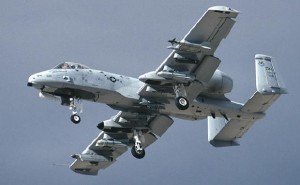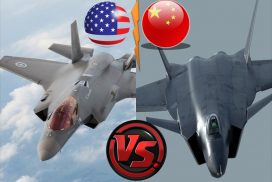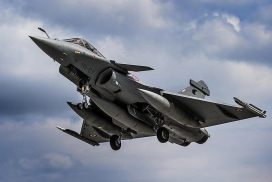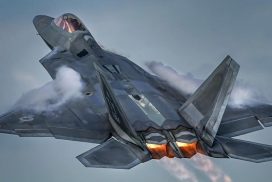 Close air support is an air operation executed against hostile targets in close proximity to friendly forces. To carry out a successful CAS mission, air force needs to maintain tactical air superiority over the area of operation or complete air supremacy over hostile territory. A CAS aircraft may either be a fixed wing aircraft or a rotary wing aircraft. The most modern ground attack aircrafts uses variety of precision-guided munitions (PGM) such as laser guided bombs (LGB) and guided missiles.
Close air support is an air operation executed against hostile targets in close proximity to friendly forces. To carry out a successful CAS mission, air force needs to maintain tactical air superiority over the area of operation or complete air supremacy over hostile territory. A CAS aircraft may either be a fixed wing aircraft or a rotary wing aircraft. The most modern ground attack aircrafts uses variety of precision-guided munitions (PGM) such as laser guided bombs (LGB) and guided missiles.
The AH-64D Apache Longbow and Mi-28N are best examples of modern rotary wing aircrafts. Fixed wing aircrafts such as A10 Thunderbolt II and MiG27 are also used for CAS role. In 1911 Italo-Turkish war, Italians became the first to use aircraft for attacking ground targets by dropping grenades from a German built monoplane, this was the dawn of close air support. In 1914 there were few people who viewed aircraft as only a tool for observation and reconnaissance, by the end of World War I aircraft became key part of militaries in Europe.
As quoted by Brigadier General Billy Mitchell “The day has passed when armies on the ground or navies on the sea can be the arbiter of a nation’s destiny in war. The main power of defense and the power of initiative against an enemy has passed to the air.” Today, CAS continues to be aviation’s unique contribution to the combat power available to the ground forces.
Safety of attacking aircraft and the pilot is the primary concern of any mission as jeopardizing the air crew will result in jeopardy of mission. En route tactics are important for CAS mission; it includes use of high altitude, medium altitude, and low/very low altitude navigation. In high altitude tactics aircrafts are flown higher than 15,000 feet above ground level (AGL). Flying at such higher altitude will guarantees lower fuel consumption, concentration on mission tactics instead of terrain avoidance; security from IR guided MANPADS and AAA batteries and increased manoeuver air space. However flying at 15,000 feet AGL is possible only if the air force has complete or at least tactical air superiority over hostile territory.
Carrying out CAS mission at high altitudes without gaining air superiority will cause detection of aircraft formations by enemy acquisition radar at long ranges, the formations will also be vulnerable to enemy SAM’s and interceptors. Medium altitude tactics are carried out between 8000 AGL and 15,000 AGL. It is not possible to carry out medium en route tactics in high threat environment. This en route tactic has more or less same advantages and disadvantages as of high altitude tactics.
Low altitude en route tactics are flown below 8000 feet AGL whereas very low en route tactics are flown below 500 feet AGL. Most of the CAS missions are carried out at low/very low altitudes; it keeps the attacking force below enemy radar coverage it is also termed as terrain hugging or terrain masking. However terrain hugging causes high fuel consumption, requirement of very high situational awareness, exposure to AAA and MANPADS. The combination of medium and low/very low en route tactic is used by air crew to carry out CCRP and CCIP bombing runs.
The final attack on target is carried out by setting up an initial point (IP). IP should be 1to 2 minutes away from the target. As a CAS mission is carried out close to friendly forces it has some restrictions. Offset direction is set to align the aircraft for attacking targets, to keep air crew away from known threat or to keep them away from being fired upon by friendly forces.
To understand relation between IP and offset direction, plot IP and target on a piece of paper and connect them with a straight line. If told to offset right, the aircraft will have to attack targets being on right hand side of the line. Only the airspace on right hand side is free for maneuvering and the left side is to be avoided strictly. There are four types of deliveries to deliver the weapons onto the target.
Level delivery: The aircraft performs a wing level pass over the target to drop ordnance.
Dive delivery: The aircraft take a dive to deliver ordnance.
Loft delivery: At first the aircraft proceeds inbound to the target, pilot starts to pull up at a calculated point to drop ordnance. Once released the weapon continues upward trajectory after reaching at the apex it follows ballistic flight path to impact.
Pop-up delivery: To execute this delivery the aircraft proceeds to the target from IP at low altitude, as it nears the target it pops up to a desired altitude to carry out dive delivery.
The basics of CAS during day are equally same for CAS during night times. However, a pilot requires high level of proficiency and situational awareness to carry out CAS during night times or during adverse-weather conditions. Limited visibility CAS depends extremely on advanced avionics and sensors like FLIR, radar, radar beacon and TV. Sometimes visual deployment of weapons is also carried out during low visibility; aircrew relies on battlefield fires or illumination of target by ground forces for successful attack.
Fixed wing aircrafts are preferred weapon delivery platforms for high threat environment because helicopters are quiet sluggish as compared to fixed wing aircraft and can become an easy prey of enemy air defenses. Fixed wing aircraft can carry out a quick runs over target area and retreat ASAP. Attack helicopters are often used for anti-tank role. They can be used for CAS in a medium or low threat environment where enemy air defenses are weak or not present at all.
Close Air Support 2011 will be held in London on September 21-22nd 2011 Supported by Lead Sponsor Raytheon, along with Embraer Defence Services the guest speakers will give insight. For more information about the event visit http://www.closeairsupport.co.uk/Event.aspx?id=495402



